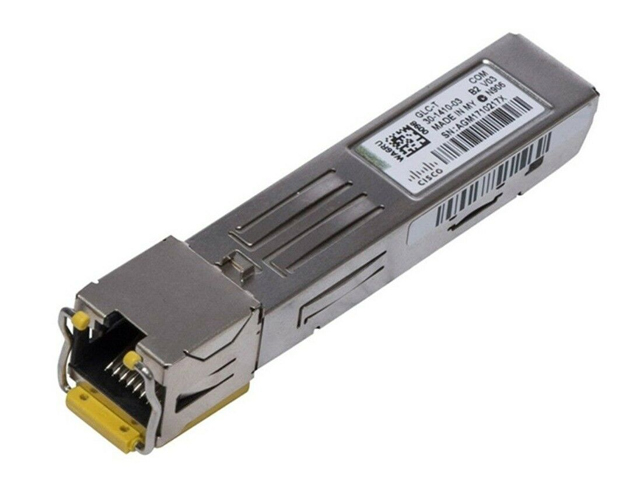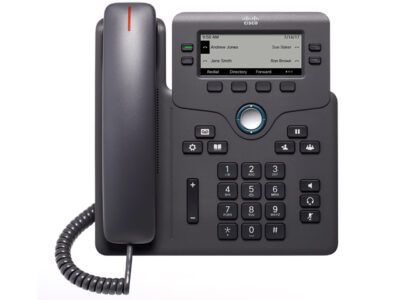
Actual product may vary from the images
GLC-T New Cisco 1000BASE-T SFP Copper Gigabit Interface 100M Reach
MPN: GLC-T | UPC: 0 37332197412 | CONDITION: New
Product Details
Cisco GLC-T Transceiver: A Comprehensive Guide to Understanding and Choosing the Right Module for Your Network
In the world of networking, the term “transceiver” often comes up in conversations. A transceiver is a device that can transmit and receive data over a network. It is a critical component of network architecture, allowing for the exchange of information between devices. One of the most popular transceivers in the market today is the Cisco GLC-T Transceiver. In this article, we will explore what the Cisco GLC-T Transceiver is, how it works, and why it is a popular choice for many network administrators.
Table of Contents
- Introduction
- What is a Transceiver?
- What is the Cisco GLC-T Transceiver?
- Benefits of the Cisco GLC-T Transceiver
- How Does the Cisco GLC-T Transceiver Work?
- Compatibility with Cisco Switches
- Comparison with Other Transceivers
- Factors to Consider When Choosing a Transceiver
- Tips for Choosing the Right Transceiver for Your Network
- Installing and Configuring the Cisco GLC-T Transceiver
- Troubleshooting Common Issues
- Frequently Asked Questions (FAQs)
- Conclusion
1. Introduction
In the ever-changing world of networking, it is essential to stay up-to-date with the latest technologies and trends. The Cisco GLC-T Transceiver is a popular choice for many network administrators due to its compatibility and reliability. This article aims to provide a comprehensive guide to understanding the Cisco GLC-T Transceiver, including its features, benefits, and how it works.
2. What is a Transceiver?
A transceiver is a device that can transmit and receive data over a network. It converts data from electrical signals to optical signals and vice versa. A transceiver is a crucial component of network architecture, enabling devices to communicate with each other.
3. What is the Cisco GLC-T Transceiver?
The Cisco GLC-T Transceiver is a copper-based transceiver module that is compatible with Cisco switches. CISCO has designed it to operate over Category 5 cabling, which is a type of twisted-pair copper wiring commonly used for Ethernet networks. You can remove and replace the transceiver while the switch is running because the Cisco GLC-T Transceiver is hot-swappable.
4. Benefits of the Cisco GLC-T Transceiver
The Cisco GLC-T Transceiver offers several benefits to network administrators, including:
- Cost-effective: Compared to other transceivers options available in the market the Cisco GLC-T Transceiver is an affordable option.
- High compatibility: The Cisco GLC-T Transceiver is compatible with a wide range of Cisco switches, making it a popular choice for many network administrators.
- Hot-swappable: You can replace the transceiver without disrupting network operations because it is hot-swappable.
- Easy installation: The Cisco GLC-T Transceiver is easy to install and configure, even for those with limited technical knowledge.
5. How Does the Cisco GLC-T Transceiver Work?
The Cisco GLC-T Transceiver works by converting electrical signals from the switch into optical signals that can be transmitted over the network. The transceiver uses copper cabling to transmit data and is compatible with Category 5, 5e, and 6 cabling. The Cisco GLC-T Transceiver is connected to the switch using an SFP (Small Form-Factor Pluggable) port. It is a hot-swappable interface that can be easily replaced if needed.
6. Compatibility with Cisco Switches
One of the key advantages of the Cisco GLC-T Transceiver is its compatibility with a wide range of Cisco switches. The module is compatible with Cisco Catalyst switches, Nexus switches, and the 2500, 2600, 3500, and 3700 series routers. This compatibility makes it a versatile option for network administrators who are looking to upgrade their existing network infrastructure.
7. Comparison with Other Transceivers
There are several types of transceivers available in the market, each with its own set of advantages and disadvantages. Consider the following highly important factors when comparing the Cisco GLC-T Transceiver to other transceivers:
- Compatibility: The Cisco GLC-T Transceiver is compatible with a wide range of Cisco switches, making it a popular choice for many network administrators.
- Cost: The Cisco GLC-T Transceiver is a cost-effective option compared to other transceivers in the market.
- Performance: The Cisco GLC-T Transceiver supports a data transfer rate of up to 1 Gbps, which is suitable for most small to medium-sized networks.
- Distance: The Cisco GLC-T Transceiver has a range of up to 100 meters, which may be insufficient for larger networks that require longer distances.
8. Factors to Consider When Choosing a Transceiver
Consider the following factors when choosing a transceiver for your network:
- Compatibility: Ensure that the transceiver is compatible with your existing network infrastructure, including switches and routers.
- Cost: Consider the cost of the transceiver, as well as any additional costs associated with installation and configuration.
- Performance: Consider the data transfer rate of the transceiver, as well as any other performance-related factors such as latency and packet loss.
- Distance: Consider the distance that the transceiver is capable of transmitting data over, and ensure that it meets the requirements of your network.
9. Tips for Choosing the Right Transceiver for Your Network
Keep the following steps in mind when choosing a transceiver for your network:
- Research different types of transceivers to determine which one is best suited for your network.
- Consider the compatibility of the transceiver with your existing network infrastructure.
- Determine the distance that the transceiver needs to transmit data over, and ensure that it meets the requirements of your network.
- Compare the cost of different transceivers to determine which one offers the best value for money.
- Consult with a network specialist to determine the best transceiver for your specific network requirements.
10. Installing and Configuring the Cisco GLC-T Transceiver
The installation and configuration process for the Cisco GLC-T Transceiver is relatively simple, even for those with limited technical knowledge. Follow the below steps to install and configure the transceiver:
- Turn off the switch and unplug it from the power source.
- Locate the SFP port on the switch and remove the cover if present.
- Insert the Cisco GLC-T Transceiver into the SFP port, ensuring that it is securely in place.
- You need to connect one end of the Ethernet cable to the RJ-45 port on the transceiver and the other end to the device that needs to be connected to the network.
- Power on the switch and wait for it to boot up.
- Configure the transceiver settings, including the speed and duplex mode, using the switch’s command-line interface (CLI).
11. Troubleshooting Common Issues
While the Cisco GLC-T Transceiver is generally a reliable and easy-to-use device, there may be times when issues arise. Use the following tips to troubleshoot common issues:
- Check the physical connections to ensure that they are properly connected
- You have to ensure that the transceiver is compatible with your switch and is inserted into the correct SFP port.
- Verify that the correct transceiver settings have been configured on the switch.
- Check for any firmware updates for the switch and the transceiver.
- If the issue persists, contact the vendor or a network specialist for assistance.
| SKU | GLC-T |
|---|---|
| Condition | New |
| Brand | CISCO |
| GTIN | 0 37332197412 |
- The warranty for refurbished units is 30 days.
- The warranty for New units is as per the manufacturer’s terms and conditions.
















